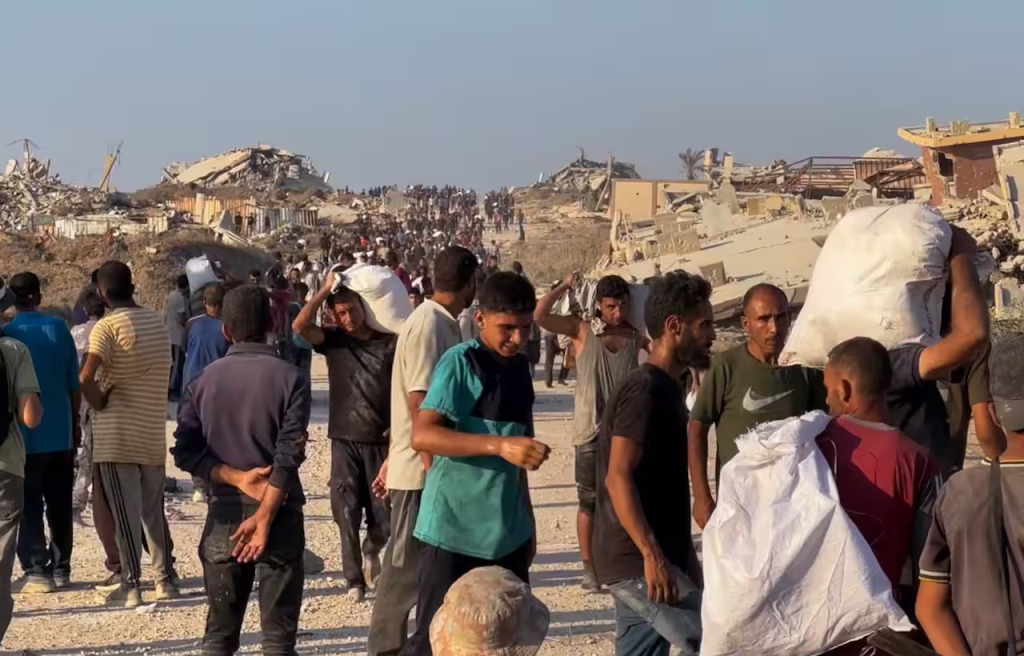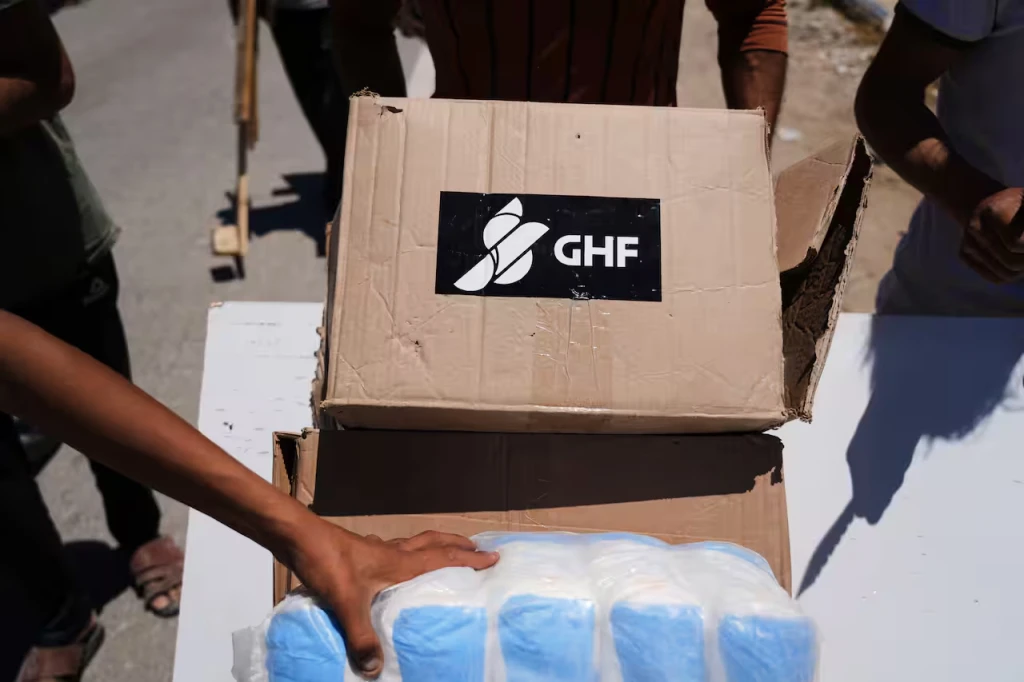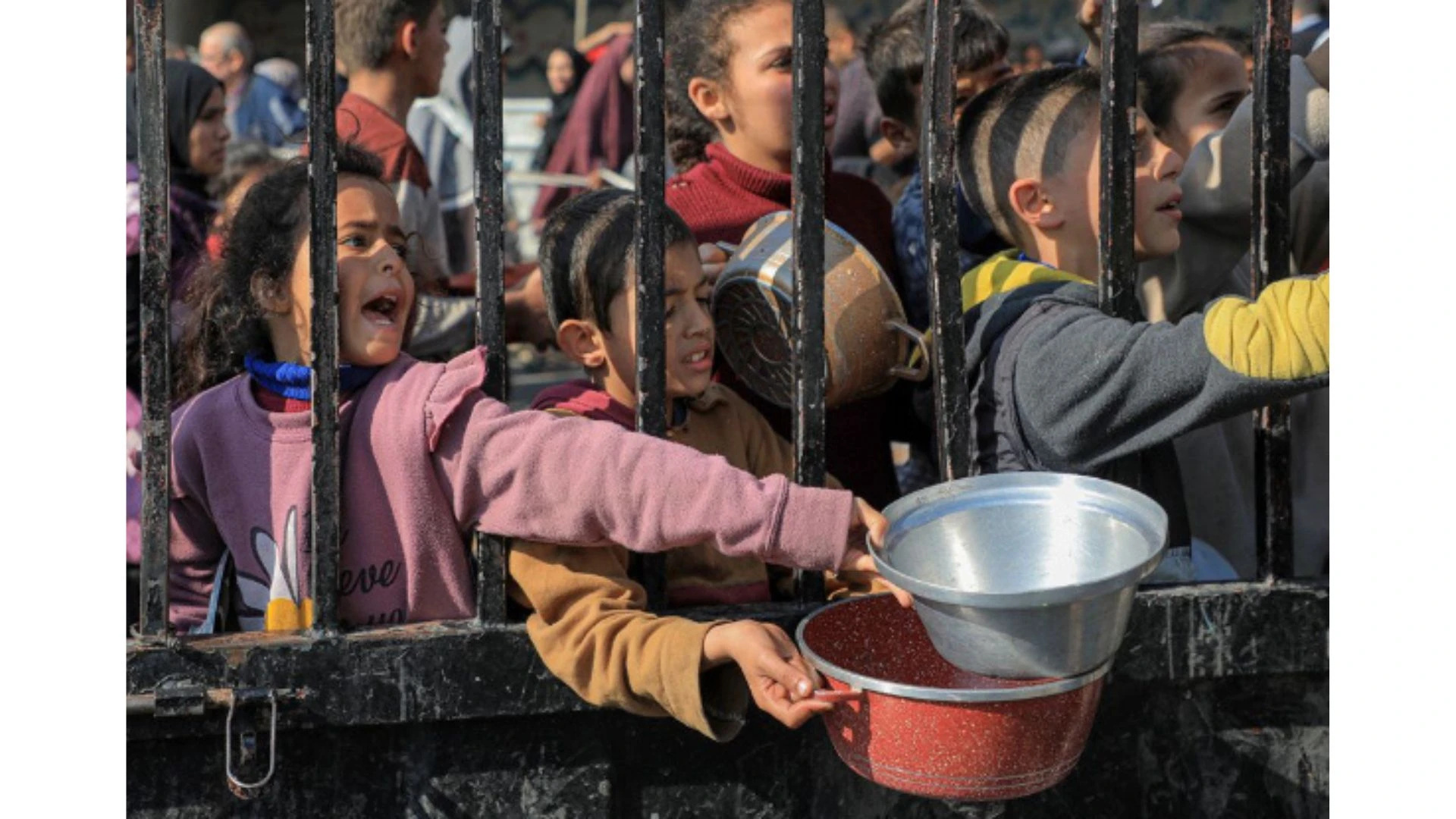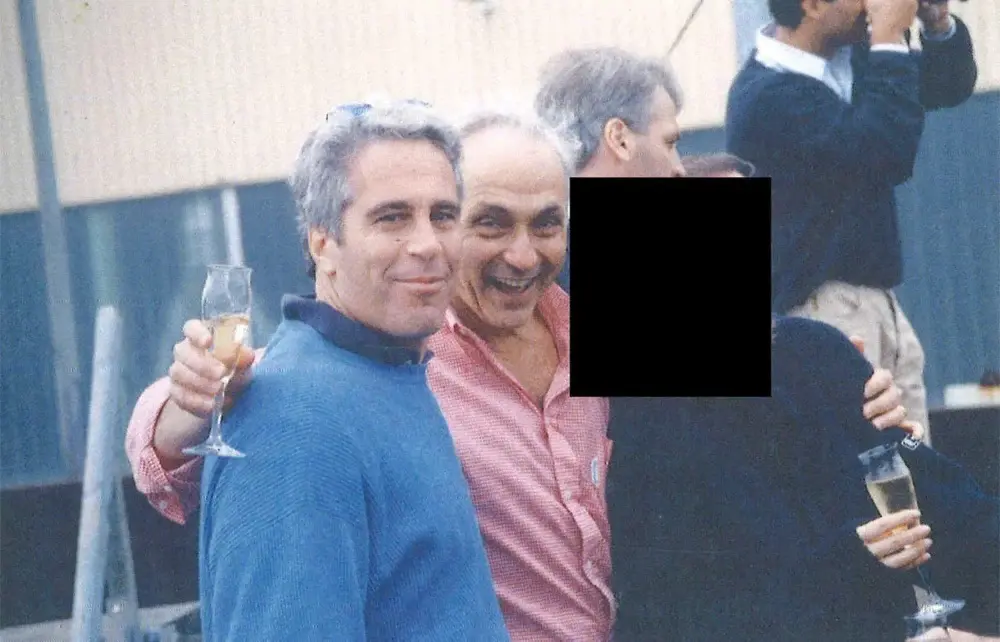Israel has imposed a total blockade on Gaza since March 2 after US Special envoy Steve Witcoff’s ceasefire talks broke down. Days later, Israel completely halted the entry of food, medicine, fuel, and other essential supplies into Gaza for two and a half months, stating that its goal was to compel Hamas to free hostages. In response to international pressure, after disturbing videos and images of famine inundated social media, Israel brought the Gaza Humanitarian Foundation (GHF) in May, a partnership between American evangelicals and private US security firms, which has come under severe criticism after displaying amateurism during the handling of Gaza’s large humanitarian aid relief project, which has exposed Israel clear intent to weaponising aid.
Since May, the people of North Gaza have found themselves entirely cut off from GHF food delivery sites, while daily, Palestinians risk their lives to obtain low-nutritional aid packages in Gaza’s dangerous no man’s land. Over the weekend, the circumstances worsened to such a critical level that Israel, under international pressure, was compelled to reconsider and tactically pause its devastating campaign in Gaza. Many have interpreted this move as another attempt from Israel to manipulate public opinion to hide what B’Tselem, the Israeli Information Centre for Human Rights in the Occupied Territories, described in their new report as Israel’s “deliberate, coordinated action to destroy the Palestinians in the Gaza Strip,” which amounts to genocide.
Report: The Israeli Information Centre for Human Rights in the Occupied Territories (Source: B’Tselem)
Meanwhile, the Physicians for Human Rights Israel (PHRI) released a position paper today, titled “Destruction of Conditions of Life: A Health Analysis of the Gaza Genocide,” which exposes Israel’s deliberate and cumulative dismantling of Gaza’s health system.
POSITION PAPER: Destruction of Conditions of Life: A Health Analysis of the Gaza Genocide,” (Source: PHRI)
Johnnie Moore, who serves as the executive Chairman of GHF, is an evangelical figure with strong ties to U.S. President Donald Trump and Israeli Prime Minister Benjamin Netanyahu. The details surrounding the foundation’s creation and its financial backing remain unclear. Shortly after the GHF started aid distribution to the war-affected Gaza, alarming reports surfaced regarding Israeli soldiers and US private security firms shooting unarmed Palestinians who were approaching the aid stations for food. The UN human rights office, which monitors the situation on the ground, reports that over 1,000 Palestinians have lost their lives while attempting to obtain food at these distribution sites.
Reports and testimonies from IDF soldiers and security contractors working at various aid distribution centres in Gaza have surfaced, offering a disturbing glimpse into the Gaza Humanitarian Foundation (GHF) and its security personnel from UG Solutiions and Safe Reach Solutions (SRS). Anthony Aguilar, a retired lieutenant colonel from the US Army Special Forces who served as a contractor at an aid distribution site in Gaza, has publicly stated that he directly observed war crimes committed by the Israel Defence Forces and by American contractors associated with the enigmatic Gaza Humanitarian Foundation (GHF).
“I witnessed the Israeli forces shooting at the crowds of Palestinians,” Anthony Aguilar told journalist and international editor Jeremy Bowen, in an interview conducted by the BBC over the weekend. “I witnessed the Israeli forces firing a main gun tank round from the Merkava tank into a crowd of people, destroying a car of civilians that was simply driving away from the site. I witnessed mortar rounds being fired at the crowd… to keep them controlled,” adding, “without question, I witnessed war crimes,” said Aguilar.
None of the major American television networks has broadcast this interview, even though Aguilar’s testimony depicts collective punishment and a willful famine imposed on civilians, which directly contravenes International Humanitarian Law (IHL). A report released by a group named “Writers Against the War” concerning Gaza uncovers significant pro-Israel bias among the reporters, editors, and executives at the New York Times. The report identifies senior editors, journalists, and executive officers at the Times, whom the organisation claims have “material and ideological connections to occupation and apartheid.”
VIDEO: Former US Green Beret says Israel committed war crimes at Gaza food distribution site (Source: BBC News)
As described in a shocking report by Haaretz, citing anonymous Israeli soldiers, the troops received orders to open fire on groups of Palestinians and to employ excessive lethal force against individuals who seemed to present no danger. Israeli soldiers describe the food distribution sites as “Killing field” whilst confirming the use of machine guns from tanks and grenades against unnamed civilians. These are not isolated cases and appear to be the result of a crowd control directive emanating from the IDF’s upper echelon, most likely from the Israeli Ministry of Defense. Brigadier General Yehuda Vach, head of the IDF’s Division 252, is often cited in testimonies about shootings near aid sites. Haaretz reported that he made the Netzarim corridor dangerous, compromised soldier safety, and allegedly ordered the unauthorised demolition of a Gaza hospital.
In an interview aired last Tuesday on Israel’s Channel 12, a 25-year-old American security guard who worked for UG Solutions at one of the Gaza aid sites, delivered a chilling recount of what he witnessed during his time in the Strip:
On Saturday, Israel announced air drops of aid into Gaza and plans for humanitarian corridors amid growing international criticism over the worsening hunger crisis. Restrictions on aid have faced backlash, especially as many Palestinians have died trying to access food distribution points. The UN has warned of a looming famine in Gaza. The killing is so out of control that over the weekend, Israel’s Foreign Ministry was forced to announce a military tactical pause in certain areas of Gaza to allegedly facilitate aid delivery. However, Israeli strikes have killed at least 36 civilians in Gaza this morning, including a woman and her newborn baby. The Israeli military is said to have halted operations in Muwasi, Deir al-Balah, and Gaza City from 10 a.m. to 8 p.m. The IDF has claimed it will establish secure routes for aid humanitarian organisations to deliver urgent food and essential supplies daily from 06:00 to 23:00. Yet, trucks are being looted by ISIS-related gangs and dealers, and very little food is reaching the starving population. Furthermore, the IDF plans to resume airdrops to address the hunger crisis, even though UN and NGO humanitarian operation leaders doubt this will sufficiently meet the needs of Gaza’s 2 million residents. In response, Jordan and the UAE conducted airdrops of aid into Gaza, with Jordanian officials reporting 25 tonnes of food and supplies dropped on Sunday, including a joint operation with the UAE.
Philippe Lazzarini, the leader of the UN agency for Palestinian refugees (UNRWA), is urging Israel to permit additional overland convoys rather than relying on perilous air drops into Gaza. He emphasises that “Air drops will not reverse the deepening starvation.” According to Gaza’s health ministry, 133 individuals, including 87 children, have succumbed to malnutrition since the onset of the war. Reportedly, Israel has allowed around 4,500 trucks to cross into Gaza for distribution by the UN and different aid organisations, at an approximate rate of 69 trucks per day. This number is considerably less than the daily 500 to 600 trucks the UN has recommended to fulfil Gaza’s humanitarian needs.
According to the Gaza humanitarian response update report, from the United Nations Office for the Coordination of Humanitarian Affairs (OCHA), which covers the period 6 – 19 July 2025, the consequences for children who may survive this long-lasting engineered famine will affect their well-being far into the future.
“A severely malnourished child is over ten times more likely to die than a well-nourished peer. Beyond the immediate risk to life, the consequences for those who survive can be long-lasting: malnutrition during early childhood can impair brain development, weaken the immune system, reduce the body’s ability to absorb nutrients, and hinder both cognitive and physical growth – affecting their well-being far into the future.” (OCHA)
Defense for Children International – Palestine (DCI), in partnership with Doctors Against Genocide, released a report in June 2024, titled, “Starving a Generation,” which exposes how the Israeli authorities have intentionally used starvation as a tool of genocide, leading to the avoidable deaths and suffering of Palestinian children in Gaza, which will have detrimental effects for generations ahead.
REPORT: “Starving a Generation” (Source: DCI)
According to reports in the Israeli press this morning, the plan to create a “humanitarian city” which Israeli PM Ehud Olmert and UNRWA said mirrors “Concentration Camp,” on the remnants of Rafah for hundreds of thousands of Palestinians, has been put on hold. This sinister initiative, presented by the Israeli Authorities as an opportunity for voluntary relocation, was nothing short of a sadistic plan to forcibly exile the Palestinians, in a desperate attempt to empty Gaza of its population. A senior security source disclosed this information to Israeli outlet ynet, stating: “There is no decision to move forward with this, nor is there any alternative plan.” The Rafah Humanitarian City is a large containment area, constructed and enclosed under the pretense of providing assistance. However, when looking at the Morag Corridor, engineered by the Israeli authorities, it becomes clear that the aim is to funnel Gaza’s residents (2 million) into Rafah, as illustrated on this map from @shameensuleman.

According to the Integrated Food Phase Security Classification (IPC), the leading global authority on hunger assessment, famine is defined as ‘extreme food deprivation.’ This severe form of food insecurity is officially acknowledged only when at least two individuals per 10,000 die from starvation daily, 20 percent of households face severe food shortages, and 30 percent of children are affected by acute malnutrition. It is essential to examine why famine has not been officially declared in Gaza, despite fears of ‘mass starvation.’ Furthermore, the chaos and killing at the food distribution sites in Gaza call for an independent investigation to identify the factors that are exacerbating the famine situation in Gaza and whether these issues are connected to the Gaza Humanitarian Foundation (GHF). SBS News has the story…

Niv Sadrolodabaee reports for SBS News…
Why famine hasn’t been declared in Gaza despite ‘mass starvation’ fears
While there has not been an official declaration of famine in Gaza, some say it already exists in the Palestinian enclave as aid and human rights groups warn that “mass starvation” is spreading. Images of gaunt children and families clutching empty pots are painting an increasingly grim picture of Gaza, where hunger is now claiming lives.
Human rights groups are growing increasingly alarmed over the humanitarian situation in Gaza, which has been under Israeli bombardment since 7 October 2023 after Hamas — the political and military group that rules Gaza — launched a surprise attack on southern Israel, marking a significant escalation in a long-running conflict.
More than 100 international aid organisations and human rights groups on Wednesday said in a joint statement that “mass starvation” is spreading in Gaza and urged governments to step in and “stop waiting for permission to act”.
“The hunger situation in Gaza is deteriorating at a pace we have never seen before,” Unni Krishnan, the global humanitarian director of Plan International, which was among the signatories of the statement, told SBS News.
“Mothers are telling us that they are often forced to choose which child to feed. We are talking about hundreds of thousands of people, especially the most vulnerable, such as children and pregnant women, at extreme risk. This must stop.”
On Wednesday, it was reported that 15 people, including a six-week-old baby, starved to death in 24 hours in Gaza, according to doctors, linking this to a wave of hunger that persisted for months.
Since the October 7 attack, at least 101 people, including 80 children, have died from hunger, with most fatalities occurring in the last few weeks, according to Palestinian officials. On the weekend, the United Nations (UN) World Food Programme (WFP) warned that “Gaza’s hunger crisis has reached new levels of desperation”.
“Malnutrition is surging with 90,000 women and children in urgent need of treatment. Nearly one person in three is not eating for days,” the WFP said. The reports came amid UN officials, aid groups and experts’ warnings in recent months that Palestinians are on the brink of famine.
How is famine declared?
According to the Integrated Food Phase Security Classification (IPC), the leading global hunger monitoring body, famine is defined as “extreme food deprivation”.
The IPC defines five distinct phases of food security, ranging from minimal (Phase 1) to famine (Phase 5). Robyn Alders, a food security expert and honorary professor at the Australian National University (ANU), told SBS News: “This is how it’s been defined in order to help international agencies make decisions about how they allocate their resources to deal with priorities.”Famine, the most severe form of food insecurity, is only declared when at least two people per 10,000 die daily of starvation, 20 per cent of households face extreme food shortage, and 30 per cent of children are acutely malnourished.

Last year, the IPC announced that a region can be deemed to be in “famine with reasonable evidence” if two out of the three criteria have been met and it is likely that the third has also been crossed. While the IPC serves as a mechanism to assess whether a famine is occurring or likely to occur, it generally does not issue official declarations. Instead, UN officials and governments usually release formal statements based on IPC analyses.
Alders said the definition “is independent of the driver” of famine. There can be natural disasters that lead to failure of food production … Or as we know, if we read history, that food shortages have been used as weapons of war, basically over thousands of years.”
Last year, famine was declared in parts of North Darfur, Sudan. Previously, Somalia experienced a famine in 2011, and South Sudan faced similar crises in 2017 and 2020.
Why has famine not been declared in Gaza?
In war-torn Gaza, which is in a deep humanitarian crisis, famine has not been declared yet.
The IPC had previously forecast that from May to September, 470,000 people in Gaza would face famine (Phase 5), one million would experience emergency food security levels (Phase 4), and the remaining 2.1 million people would be in crisis (Phase 3). Krishnan from Plan International said the lack of declaration of famine in Gaza is related to the lack of accessibility to data.
“The definition of famine is based on data. The data is not available right now, but there is no conclusion that the data doesn’t exist, except that we are not able to collect it,” he said, “Because the absence of people who could collect primary data who are not allowed to go in [Gaza], resulting in a situation where they’re not able to declare [famine].
Video: How is famine classified? 1.1 million people in Gaza facing ‘catastrophic’ food shortages (Source: SBS News)
Some experts argue that, despite a lack of data, famine already exists in Gaza. Amra Lee, a humanitarian practitioner and researcher at ANU, told SBS News: “Given the data on a hundred dying of starvation over the past or since May, we can assume, and experts have already assessed, that famine is happening in Gaza.”
“The problem right now in Gaza is not the declaration of famine. The problem right now in Gaza is that insufficient aid is getting into the strip [and] Israel, preventing the aid, getting into the strip,” the former head of program for the WFP Pacific said, adding, “I can see the famine risk has been there for a while, and it’s important, but we need to look at what’s not being done to avert the famine.”
Food supplies ’20 minutes’ away from Gaza
Lee said one of the reasons behind the worsening situation for Palestinians is the Gaza Humanitarian Foundation (GHF) program, which started in May after Israel halted all aid deliveries to Gaza in early March. The GHF bypasses traditional aid channels, including the UN, which says the US-based organisation is neither impartial nor neutral.
On 15 July, the UN said it had recorded 875 people who had been killed in Gaza while trying to get food in recent weeks, with 674 of them killed in the “vicinity of GHF sites”. Earlier that month, Israel acknowledged “incidents in which harm to civilians who arrived at distribution facilities was reported”.
It said Israeli forces had been issued new instructions following what it called “lessons learned”.
“As many have warned and have since been proven, this foundation did not have a humanitarian character. It is serving a political and military agenda,” Lee said, adding, “We need specialised experts who know how to do this … [and] sort of reinforce national health systems to avert the famine that is occurring at risk of deepening,” concluding, “We need to revert to principled aid delivery, the blockade needs to be lifted, and aid needs to reach the strip at the scale needed.”

In their joint statement, the humanitarian and aid organisations also criticised the GHF and said that “tons” of aid were in warehouses just outside Gaza, but Israel’s government was restricting its entry.
Krishnan told SBS News: “On the other side of Rafah and Gaza in Egypt and elsewhere, there are hundreds of trucks that are waiting with food supplies, which could get into Gaza within 20 minutes.”
“Hunger has always been a solvable problem … Except [for] the complete siege that has been going on from the Israeli Defence Forces,” said Krishnan.
On Wednesday, Israeli government spokesperson David Mencer rejected such claims and accused the UN and its partners of not collecting the large quantities of food and other essentials that were cleared and waiting on the Gaza side of the border, saying “aid has been flowing into Gaza”.
He also said there was “no famine caused by Israel” and alleged that there was a “man-made shortage engineered by Hamas”, who he accused of stealing aid — a claim that the establishment of the GHF was in part based on and one Hamas has denied.
[Note: Reuters reported on July 25 about a thorough study conducted by the Bureau of Humanitarian Assistance (BHA) of USAID, which was the largest funder of assistance to Gaza before the Trump administration froze all U.S. foreign aid in January. Their analysis found no evidence of massive Hamas theft of Gaza aid.
READ MORE PALESTINE NEWS AT: 21st CENTURY WIRE PALESTINE FILES
SUPPORT OUR INDEPENDENT MEDIA PLATFORM – BECOME A MEMBER @21WIRE.TV
VISIT OUR TELEGRAM CHANNEL







